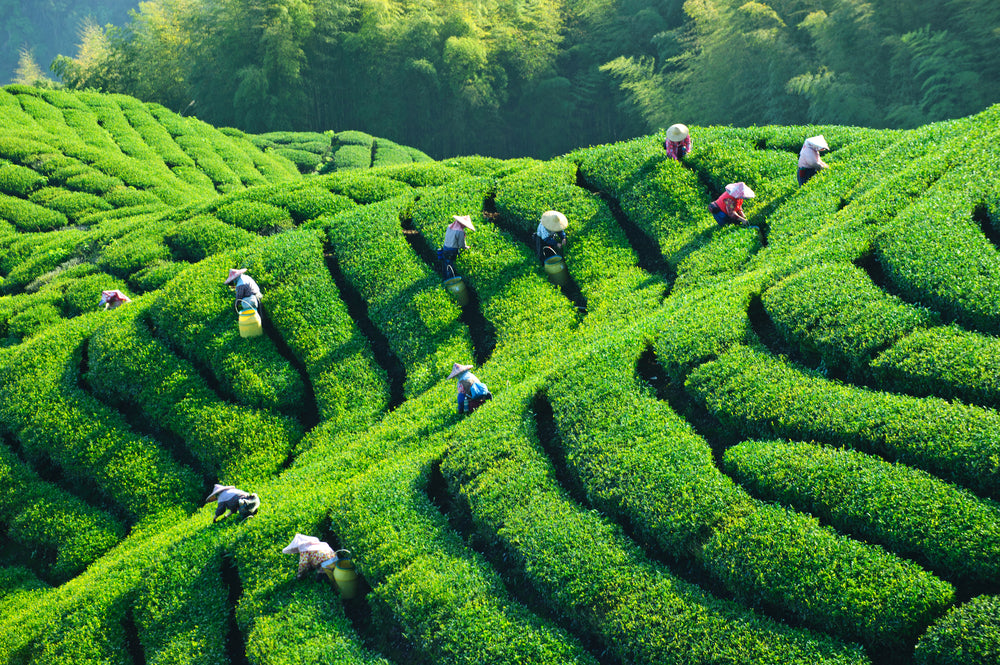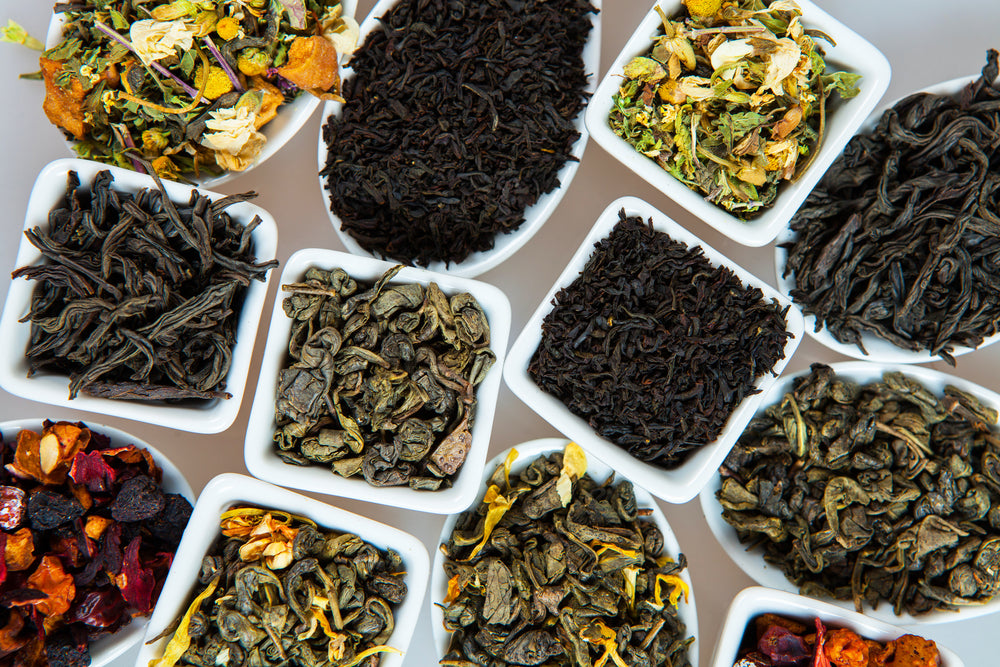
All tea comes from the tropical plant known asCamellia sinensis. The tea plant grows best in a warm climate with long sunlit days, cool nights and an abundance of rainfall. Tea plants grow at altitudes ranging from sea level to 7,000 feet and are indigenous to China, Tibet, and northern India, though they are cultivated in many other countries across the globe, including Sri Lanka, Japan, Kenya, Turkey, Indonesia, Vietnam, Argentina, Tanzania, Taiwan, Malawi, and Zimbabwe. The most complex teas grow at higher altitudes and many bushes can be cultivated for over 100 years. Tea bushes cover about six million acres of the earth and are harvested every week during the almost year-long growing season.

After each winter season, the first small leaves and buds of the tea bush are handplucked and harvested. Once exposed to air, the leaf will begin to wither. When the picked leaf becomes pliable, it can then be turned into different types of tea. A common misperception is that the various styles of tea are grown from different types of plants. The fact is that all styles of tea come from the same Camellia sinensis bush; however, the method in which they are processed varies, yielding the main classifications and varieties of tea. White, Green and Yellow tea are produced by steaming the leaves after plucking, thus eliminating the oxidation process. Oolong tea is allowed to oxidize for a short period of time, and Black tea is allowed to react with the air and oxidize, turning the green leaves black. Pu-erh tea is a style of black tea that has been piled and allowed to oxidize considerably.




